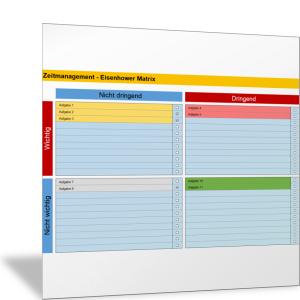


#Eisenhower matrix how to#
How to Use the Eisenhower Matrix to Prioritize Your Tasks This is what tends to help you make the big strategic gains in your business or life, and if you don’t consciously focus on these priorities they don’t get done leaving you with little long-term progress. The key takeaway is to focus on what’s important (but usually not urgent). Focusing (reactively) on the urgent stuff, almost always leads to a build-up of the really important stuff which then leads to crises. The underlying idea is based on Eisenhower’s premise which was that urgent stuff is seldom important and the important stuff is seldom urgent.Īnd this is a critical element of task prioritization. The Eisenhower matrix was designed (in part) to avoid the "urgency trap". It's no wonder he's been studied by several people. He was able to sustain his productivity for decades and his approach to time management. He also served as President of Columbia University, became the first Supreme Commander of NATO, and even managed to find time to pursue his hobbies. During his time in office, he launched several programs including (but not limited to) NASA. He was the 34th President of the United States and served two terms from 1953 to 1961. It's also often referred to as the priority matrix or the Eisenhower decision matrix.Īs the name suggests, the matrix was initially created by Dwight Eisenhower who lived an extremely productive life. This approach was made popular by Stephen Covey and later came to be known as the four quadrants approach.

As you head into the new year it might be worthwhile to consider Eisenhower’s approach to task prioritization.


 0 kommentar(er)
0 kommentar(er)
